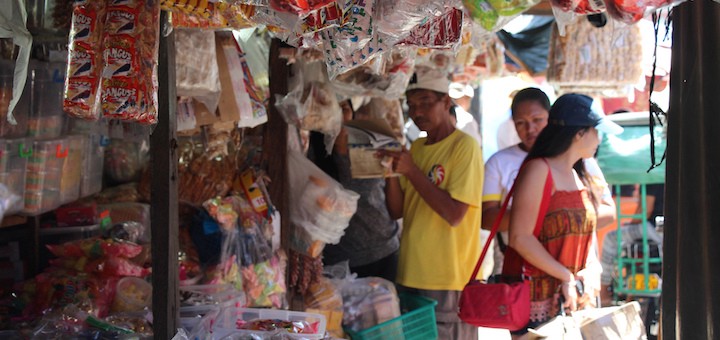No Change?
Yesterday I asked Sid to print ten copies of a flyer at the local ‘Xerox’ copy/print shop. He took a ₱1000 note with him. The total cost of the 10 copies was ₱150 and the shop couldn’t provide change.
Last week I walked up to the local ‘sari sari’ (variety) store and wanted to purchase two cans of Coke Zero. I only had a ₱500 note with me. They were unable to serve me.
A few days earlier I hailed a tricycle to get to the local town centre. The driver didn’t even have enough change for my ₱100 note.
As you can see, there’s a recurring theme here.

Another common issue in the same vein is the unavailability of advertised products, services, and particularly menu items. Cafes and restaurants are perhaps the worst culprits. I have lost track of the number of times we’ve sat down and perused the menu at a cafe/restaurant and, after some deliberation and soul searching, decided upon the dish with the most appeal — only to be informed, when we order, that it’s “not available Sir”. Irish and I have a running gag about “not available Sir”. It’s in fact quite a celebratory moment when we place an order and don’t get told that one of the items is “not available”.
Combined with ridiculously slow checkout at supermarkets, indeed ‘Point of Sale’ at most stores, I believe that the Philippines economy is taking a massive hit simply due to inability or inefficiency completing a transaction.
These issues are relatively easily addressed, and would directly improve the productivity of the Philippines economy. By addressing the following key points, business owners can improve their profitability and volume of trade:
Cash Reserves
Aas most human beings are prone to doing, small business owners are vulnerable to believing that any money they have can be spent. Financial discipline and cashflow forecasting are far too rare. But even the poorest tricycle driver or sari sari store holder could build a small cash reserve if they believed in it’s importance. In fact, in developing countries like the Philippines there are numerous micro-finance options that afford you relatively easy access to funds if you can’t assemble them by yourself. For example, in Lucena City there are dozens of co-operatives like the Lucena Multi-purpose Cooperative which can lend small amounts for brief terms right up to large lump sums for extended periods. With a cash reserve of only ₱2000 (about US$40) any cafe, sari-sari or tricyle operator should always be able to provide change to a prospective customer.
Stock Control
With a little analysis, it’s usually possible to predict with a fair degree of certainty how long your existing stocks will last and when you’ll need to replenish. And by pre-empting supply chain issues you can take steps to minimise the frustration experienced by your customers as a result of “not available” products. Whether it means diversifying your range of suppliers, ordering a fraction earlier, researching backup delivery options, developing a co-operative style plan with other businesses in your neighbourhood to back each other up so no-one is ever out of stock, removing troublesome products from your range, or updating your cafe menu to account for seasonal variations, there are numerous steps that can be taken to maximise sales and minimise customer disappointment.
Store Layout and Point-of-Sale processes
Many Filipino stores have incredibly narrow aisles, and the checkout is congested and slow. These factors contribute to a reduction in sales and increased labour costs. Supermarkets like Savemore, SM and Metro are notorious for their poorly designed checkouts and packaging processes. The flow of trolleys and customers through the checkouts is frequently snared as trolleys are abandoned and block the queue. Few stores have or use conveyer belts. EFTPOS machines are all too often offline. Barcodes and pricing issues lead to numerous delays in scanning products. Packing of goods is haphazard and slow. A purchase of roughly 30 items frequently takes 5–7 minutes to complete AFTER you reach the front of the queue (if you’re fifth in the queue if may take you 20–25 minutes just to get to the front of the queue). A better designed checkout process and resourcing would result in productivity gains of at least 20%.
In a similar vein, I’ve been into SM Department Store just prior to Christmas and seen queues snaking away from the cashiers and yet only one register open at each location, whilst 100+ retail staff are on the floor nearby. (Interestingly, each register has two staff — why it requires two staff to man a single register I really don’t understand.)
In stores like National Book Store or Watsons Pharmacy the aisles are so narrow that people often can’t even pass each other. It may seem counter-intuitive to reduce the total rack space and allocate more space to aisles, but it has been proven that a store layout that offers an aisle at least 4ft wide increases sales as happier customers spend more, returning more frequently and taking the time to browse and select their purchases. Not to mention access for the disabled or parents pushing children in strollers.
Have you observed similar impediments to business? Do you have any comments or suggestions on how business owners could increase their sales, customer satisfaction, and profitability? Please share your thoughts in the comments below.

